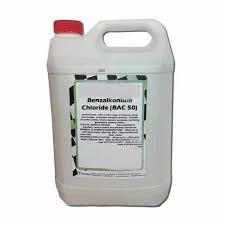Cationic Polyacrylamide Flocculants for Effective Water Treatment Applications Sharing
Cationic Polyacrylamide Flocculant An Overview
Cationic polyacrylamide flocculant (CPAM) is a synthetic polymer widely used in various industrial applications for its excellent water treatment properties. This water-soluble polymer is derived from acrylamide monomers and is characterized by its positive charge, which is crucial for its flocculating capabilities. CPAM serves as a key agent in the process of coagulation and flocculation, helping to agglomerate fine particles and promote their settlement in liquid media.
One of the primary uses of cationic polyacrylamide flocculants is in the treatment of wastewater. In many industrial processes, such as paper manufacturing, mining, and textile production, large amounts of fine particles and colloidal substances are generated. These particles can hinder the clarity of water and pose environmental hazards if discharged untreated. CPAM effectively binds with these negatively charged particles, neutralizing their charge and facilitating their aggregation into larger flocs. This process results in improved sedimentation and clarification, making it easier to separate solids from liquids.
In addition to wastewater treatment, cationic polyacrylamide flocculants are also utilized in various fields such as agriculture, oil recovery, and food processing. In agriculture, CPAM is used to improve soil structure and moisture retention. By enhancing the aggregation of soil particles, it helps optimize soil health and promote plant growth. In oil recovery, CPAM aids in the extraction of oil from reservoirs by improving the viscosity of the drilling mud and facilitating the movement of oil to the surface.
cationic polyacrylamide flocculant

The effectiveness of cationic polyacrylamide as a flocculant can vary based on its molecular weight and charge density. Manufacturers can modify these properties to tailor the polymer for specific applications. Higher molecular weight CPAMs tend to create larger flocs, improving sedimentation rates, while those with higher charge density can provide enhanced interaction with negatively charged particles. This versatility allows industries to select the most appropriate formulation for their specific needs.
Despite its many advantages, the use of cationic polyacrylamide flocculant raises environmental considerations. The polymer is non-toxic; however, improper disposal and overuse can lead to potential ecological impacts. Therefore, it is essential to adhere to guidelines and monitor application rates to minimize any negative effects on aquatic ecosystems. Additionally, researchers are exploring biodegradable alternatives to traditional CPAMs that could further mitigate environmental risks.
In conclusion, cationic polyacrylamide flocculants play a vital role in modern water treatment and various industrial processes. Their effectiveness in aggregating fine particles enhances the efficiency of sedimentation and clarification, proving beneficial in both environmental and industrial contexts. As industries continue to evolve and expand, the development of safer and more sustainable flocculant options will remain a focus for researchers and practitioners alike. By balancing efficacy with environmental responsibility, the future of water treatment and industrial applications can be both productive and sustainable.
-
Water Treatment with Flocculant Water TreatmentNewsJun.12,2025
-
Polymaleic AnhydrideNewsJun.12,2025
-
Polyaspartic AcidNewsJun.12,2025
-
Enhance Industrial Processes with IsothiazolinonesNewsJun.12,2025
-
Enhance Industrial Processes with PBTCA SolutionsNewsJun.12,2025
-
Dodecyldimethylbenzylammonium Chloride SolutionsNewsJun.12,2025





